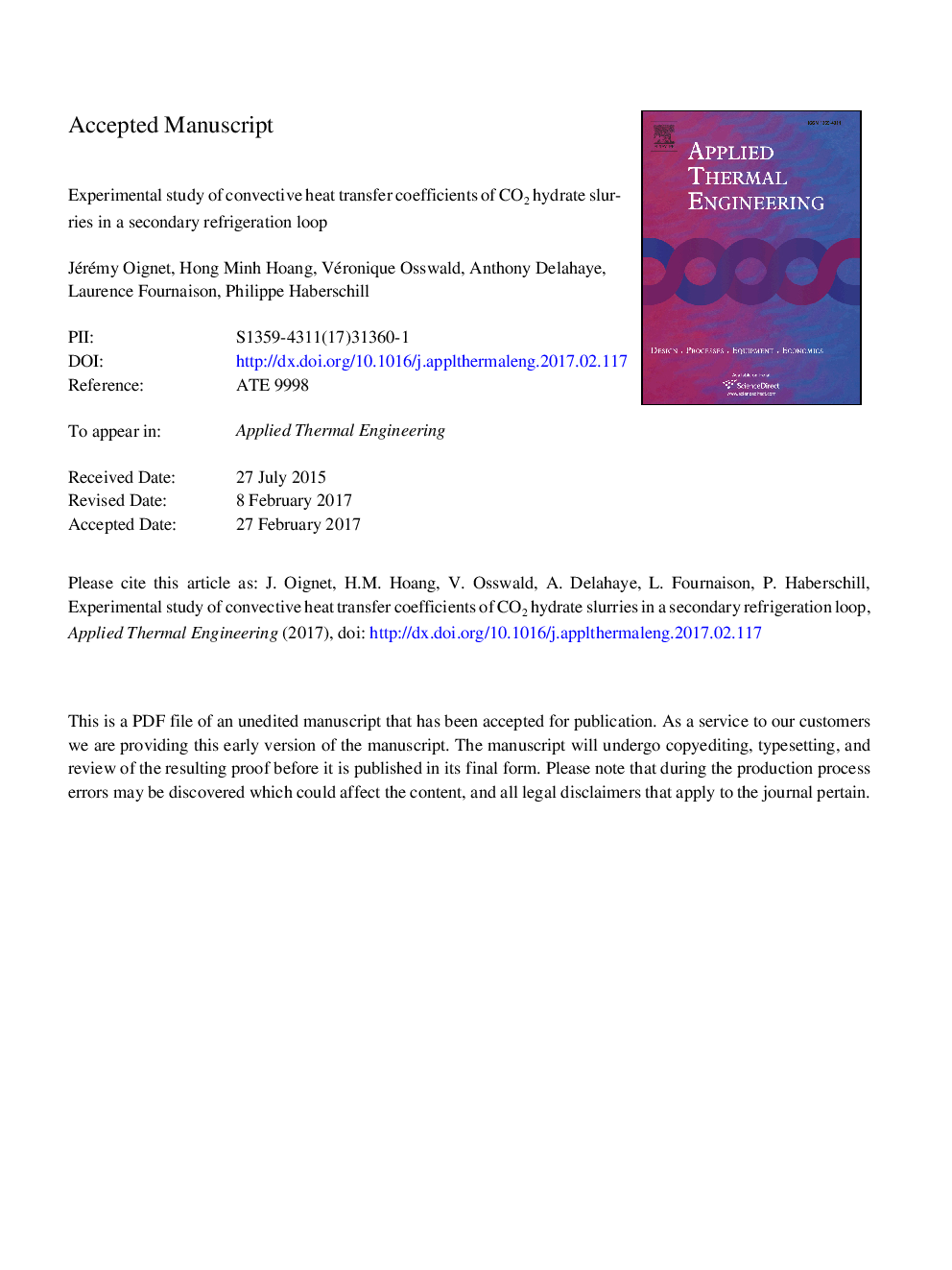| Article ID | Journal | Published Year | Pages | File Type |
|---|---|---|---|---|
| 4991393 | Applied Thermal Engineering | 2017 | 31 Pages |
Abstract
Conventional refrigerant fluids can be harmful to the environment due to their strong GWP. One of the solutions to reduce their impact could be the use of secondary refrigerant fluids, such as hydrate slurry in refrigeration devices. Gas hydrates are solid structures able to trap gas molecules and have a high dissociation enthalpy so that they can store and transport huge quantities of cold energy. The aim of the present work is to determine the thermal behavior of CO2 hydrate slurry based on a heating tube method. A secondary refrigeration loop composed of a tank in which the slurry is formed by subcooling and a loop with a heating tube has been used to determine convective heat transfer coefficients. The results have been obtained for CO2 hydrate slurries with solid fractions between 0 and 14Â vol.%. In this range of solid fractions, convective heat transfer coefficients of hydrate slurries are nearly 2.5Â times greater than that of liquid water.
Related Topics
Physical Sciences and Engineering
Chemical Engineering
Fluid Flow and Transfer Processes
Authors
Jérémy Oignet, Hong Minh Hoang, Véronique Osswald, Anthony Delahaye, Laurence Fournaison, Philippe Haberschill,
